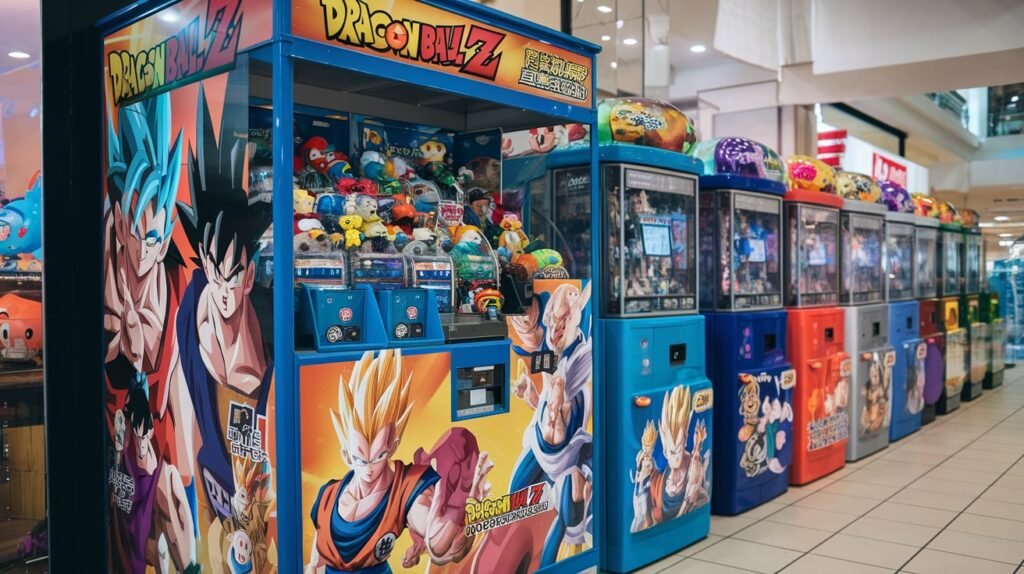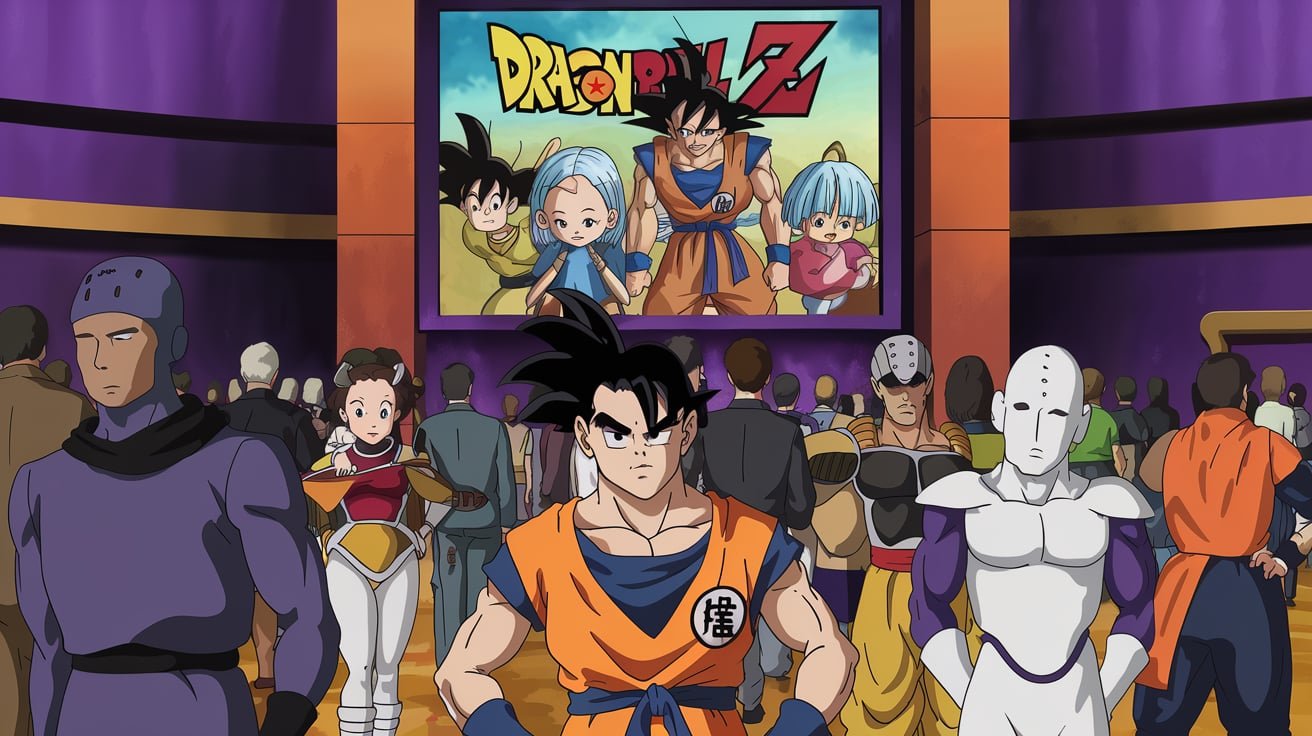Table of Contents
Introduction to Dragon Ball Z
Dragon Ball Z is a prominent installment in the anime landscape, originating as a sequel to the highly successful original series, Dragon Ball. Created by Akira Toriyama, the anime first aired in Japan in 1989 and quickly gained popularity due to its engaging storytelling and unique characters. The series is adapted from Toriyama’s manga, which has captivated audiences since its debut, establishing a significant following that persists to this day.
Initially, Dragon Ball Z was intended to follow the narrative established in Dragon Ball, which focused on the adventures of a young martial artist named Goku. However, it quickly evolved to emphasize more intense battles and climactic confrontations, resonating with viewers seeking thrilling action sequences. This shift contributed to the series’ overall reputation as a staple of the shonen genre, sparking a multitude of spin-offs, video games, and merchandise.
The series has transcended geographical boundaries, achieving a broadcasting reach across 81 countries globally. Its influence has been particularly strong in regions such as North America and Europe, where Dragon Ball Z has become a cultural touchstone for multiple generations. The anime’s iconic characters, like Goku, Vegeta, and Piccolo, have become universally recognized figures, further solidifying the show’s legacy in anime history.
Due to its blend of action, humor, and emotional depth, Dragon Ball Z remains significant within the anime community, inspiring countless creators and fans alike. Its pioneering approach has not only established a benchmark for future anime series but also created an enduring fanbase that continues to celebrate its contributions to popular culture. As we delve deeper into the series’ impact and legacy, it is essential to understand the foundational elements that have made Dragon Ball Z a lasting phenomenon in the realms of anime and entertainment.

Exploring the Legacy of Dragon Ball Z: A Cultural Phenomenon 2024
Plot Overview and Key Characters
Dragon Ball Z is a quintessential entry in the world of anime, continuing the saga that began with Dragon Ball. This series primarily explores the adventures of Son Goku, who transitions from a child to an adult, becoming a formidable warrior in the process. The plot unfolds as Goku faces various formidable foes while championing the cause of good, often with his family and friends by his side.
One of the central themes of Dragon Ball Z is Goku’s journey while navigating the demands of fatherhood and mentorship, particularly with his eldest son, Gohan. Gohan, initially portrayed as a timid child, exhibits exceptional potential, especially during pivotal battles against strong adversaries. His development from a scared boy to a brave warrior adds depth to the series, showcasing the theme of growth, both personal and heroic.
Prominent among the villains are Vegeta and Frieza, each embodying distinct aspects of rivalry. Vegeta, a Saiyan prince, initially serves as an antagonist but later emerges as a complex character with his own path to redemption and a profound connection to Goku. His rivalry fuels much of the narrative tension, underlining the significance of competition and evolution in character arcs. Frieza, on the other hand, represents pure villainy and serves as a benchmark for Goku’s growth as a fighter, leaving a lasting impression on the series.
Supporting characters like Piccolo further enrich the storyline, transitioning from rival to ally, and playing a critical role in both Goku’s life and Gohan’s growth. Through their interactions and shared battles, Dragon Ball Z emphasizes themes of family, rivalry, and personal development. These elements establish the series not just as an action-oriented narrative but also as a reflection on the bonds that define its characters.

Exploring the Legacy of Dragon Ball Z: A Cultural Phenomenon 2024
The Saiyan Saga: An Introduction to the Saiyan Heritage
The Saiyan Saga represents a pivotal point in the narrative framework of Dragon Ball Z, marking the transition from a series centered around martial arts and adventures to a grand narrative filled with cosmic battles and the exploration of heritage. Introduced as the first major arc of the series, it unfolds the backstory of Goku, revealing his true identity as a Saiyan. This revelation not only enriches his character but also provides a foundation for the overarching plot that follows throughout the series.
The saga begins with the unexpected arrival of Raditz, Goku’s long-lost brother, who brings forth the shocking truth about Goku’s Saiyan origins. This familial connection intensifies Goku’s character development and introduces themes of heritage and identity. Raditz’s arrival serves as a catalyst for the drama that unfolds, showcasing the harsh realities of being a Saiyan warrior; he demands Goku’s allegiance to their lineage, presenting moral conflicts about allegiance to family versus the principles Goku has cultivated on Earth.
Furthermore, the subsequent appearance of Vegeta and Nappa escalates the stakes dramatically. The fierce Saiyan warriors pose a catastrophic threat to the Earth, not only challenging Goku but also forcing other characters, such as Piccolo and Gohan, into the fray. This escalation introduces the audience to the immense power and destructive capability of the Saiyan race, fundamentally shifting the tone of the series. The battle sequences that arise during this saga are characterized by a mix of strategy, valor, and emotional narratives, contributing further to the lore of the Dragon Ball Z universe.
Overall, the Saiyan Saga successfully sets the stage for future developments, deepening the lore surrounding Saiyans and their significance in the broader universe. This arc lays critical groundwork for events and character relationships that will later define the trajectory of Dragon Ball Z and its legacy.

Exploring the Legacy of Dragon Ball Z: A Cultural Phenomenon 2024
Key Themes: Friendship, Redemption, and Growth
The cultural impact of Dragon Ball Z is profoundly shaped by its central themes of friendship, redemption, and growth. Throughout the series, the relationships between characters, particularly between Goku, Vegeta, and Piccolo, serve as an exploration of these concepts, creating a narrative rich with emotional resonance and personal evolution. The theme of friendship is prominently illustrated in Goku’s rapport with both Vegeta and Piccolo. Initially introduced as adversaries, their relationships gradually transform into deep bonds that signify camaraderie and mutual respect.
Goku’s dynamic with Vegeta is particularly significant. From their original rivalry, characterized by conflict and competition, they evolve into formidable allies who share a common goal of protecting the universe. This transformation highlights the redemptive aspect of their relationship, as Vegeta transitions from an antagonist to a heroic figure. His journey exemplifies personal growth, showcasing the potential for change and redemption through friendship. As he grapples with his past and seeks to define his place in a broader moral spectrum, Vegeta’s character becomes a poignant reflection of what it means to grow beyond one’s origins.
Similarly, the relationship between Goku and Piccolo embodies the theme of redemption. Initially labeled as enemies, their bond develops through shared experiences and challenges, ultimately leading to a deep friendship based on trust and reliance. Piccolo’s evolution from villain to mentor and protector of Goku’s son, Gohan, underscores a powerful narrative of personal transformation fueled by empathy and friendship. The evolution of these relationships not only reinforces the series’ themes but also engages the audience in a timeless conversation about the nature of bonds forged through adversity.
Cultural Impact and Merchandise
Since its debut, Dragon Ball Z has emerged as a pivotal force in shaping global pop culture. The series not only captivated audiences in Japan but also found a vast fan base worldwide, influencing various aspects of entertainment and consumer behavior. Its rich storytelling, memorable characters, and iconic battles have created a lasting legacy, marking it as more than just a television series.
The merchandising success of Dragon Ball Z is a testament to its widespread popularity. Action figures, collectibles, and toys have become staples in many households, with characters such as Goku and Vegeta becoming iconic figures admired by generations. Additionally, video games based on the series have achieved critical acclaim and commercial success, further embedding characters and narratives into the fabric of gaming culture. Titles like “Dragon Ball FighterZ” and “Dragon Ball Xenoverse” showcase the franchise’s adaptability and capacity to engage new audiences while appealing to long-time fans.
The influence of Dragon Ball Z extends beyond just toys and games; its soundtracks have also made a significant cultural imprint. The distinctive openings and endings, often created by beloved artists, have not only enhanced the viewing experience but also contributed to the show’s emotional depth. Music from the series has been sampled and referenced in numerous other media, illustrating its broad reach and the profound impact it has had on the music industry.
In summary, the cultural legacy of Dragon Ball Z is illustrated by its expansive impact on merchandise, entertainment, and music. As the series continues to evolve, its influence persists, ensuring that it remains a significant part of popular culture across generations.
Dragon Ball Z Kai: A Remastered Experience
Dragon Ball Z Kai, launched in 2009, represents a significant remastering of the iconic original series, Dragon Ball Z. This remastered edition aimed to enhance the viewing experience for both new audiences and longtime fans by improving animation quality and refining pacing. The production values were elevated through digitally remastered visuals, which provided sharper images and a more vibrant color palette. Viewers appreciated the refreshed artwork that brought a modern feel to the beloved series while remaining true to its roots.
In addition to improved visuals, Dragon Ball Z Kai worked to rectify the original series’ pacing issues. The earlier show contained a substantial amount of filler content, often slowing the narrative and detracting from the central plot. In contrast, Dragon Ball Z Kai focused on presenting a more streamlined story, adhering closely to the original manga by Akira Toriyama. This revision allowed for a more cohesive viewing experience that retained the engaging action and character development that fans loved.
Conversely, veteran fans had mixed feelings. While many praised the improved animation and pacing, some expressed nostalgia for the original series’ filler and specific character arcs. Nonetheless, Dragon Ball Z Kai succeeded in introducing the series to a new generation of fans and reaffirmed the enduring legacy of the Dragon Ball franchise, making it more enjoyable for both veterans and novices alike.
Successor Series: Dragon Ball GT and Dragon Ball Super
The legacy of Dragon Ball Z is significantly continued through its successor series, Dragon Ball GT and Dragon Ball Super. While they both aim to extend the narrative established in Dragon Ball Z, their approaches and receptions are markedly different. Dragon Ball GT, which was released in 1996, takes a unique direction by introducing original storylines that diverge from the manga series created by Akira Toriyama. It presents an entirely new narrative arc, featuring Goku turned back into a child and embarking on an interstellar adventure.
This series received mixed reviews from fans and critics alike, who felt it did not capture the same essence as its predecessor. The critical reception forced Dragon Ball GT to exit the spotlight relatively quickly, causing a shift in audience preferences.
In contrast, Dragon Ball Super, which began airing in 2015, returns more closely to the original creations of Toriyama and adheres to the character development and themes established in Dragon Ball Z. The narrative introduces new characters, such as Beerus and Whis, and further expands the Dragon Ball universe through multiverse concepts and new forms like Super Saiyan God. The connection to Dragon Ball Z evokes nostalgia among fans, while also attracting a new generation of viewers. This series has generally been well-received, praised for its animation quality and exciting plot developments.
While both series serve as successors to Dragon Ball Z, Dragon Ball Super has proven to uphold and enhance the franchise’s legacy. Serving as a bridge connecting the past to a promising future, it maintains fan engagement in a way that Dragon Ball GT struggled to achieve. The contributions of both series continue to shape the trajectory of the beloved Dragon Ball universe, preserving the core elements that fans have cherished for decades.
Legacy and Continued Relevance
Since its initial broadcast in the 1990s, Dragon Ball Z has continued to exert a significant influence on the anime landscape, solidifying its status as a cultural phenomenon. This iconic series, created by Akira Toriyama, remains a beloved staple within the anime community, with a legacy that transcends generations. The series’ enduring popularity is evidenced by the wide array of merchandise available, including action figures, clothing, and collectibles, which cater to both new and long-time fans alike.
Furthermore, Dragon Ball Z has inspired numerous adaptations and expansions, which serve to keep the narrative alive. Recent developments include the successful revival of the franchise with titles such as “Dragon Ball Super,” which introduces new characters and story arcs that resonate with contemporary audiences. The show’s consistent adaptation to modern storytelling techniques has allowed it to connect with the evolving tastes of fans while maintaining the essence of what made the original series so compelling.
The dedicated fanbase has played an instrumental role in preserving the spirit of Dragon Ball Z. Communities have formed around the series, engaging in discussions, fan art, and cosplay, thus creating a vibrant subculture that celebrates its legacy. Social media platforms have facilitated global interactions amongst fans, who share their love for the series through various digital mediums. This ongoing connection to the series not only keeps the passion alive but also introduces Dragon Ball Z to new audiences, ensuring that its impact endures.
In conclusion, Dragon Ball Z remains relevant in contemporary culture due to its continuous adaptations, a diverse array of merchandise, and a passionate fan community dedicated to its legacy. The series has effortlessly woven itself into the fabric of modern anime, ensuring its place as a timeless classic.
Conclusion: The Enduring Power of Dragon Ball Z
In reflecting upon the widespread influence of Dragon Ball Z, it becomes clear that this anime series is more than just a source of entertainment; it has solidified its status as a cultural icon. One of the key themes that permeates the narrative is the concept of perseverance. Throughout its many arcs, characters consistently face overwhelming adversity, grow stronger, and emerge victorious. This universal theme resonates deeply with audiences worldwide, particularly those who find themselves in challenging situations.
Furthermore, the character development within Dragon Ball Z is noteworthy. Each character undergoes significant transformations, facing both internal and external conflicts. From Goku’s unwavering determination to protect his loved ones, to Vegeta’s evolution from antagonist to ally, these character arcs allow viewers to form emotional connections, enhancing their investment in the series. The multifaceted nature of these characters showcases the complexities of human experience, making their struggles relatable on many levels.
The influence of Dragon Ball Z extends beyond its original airing; it has inspired countless artists, writers, and creators across various mediums. This anime has penetrated popular culture, spawning a multitude of merchandise, spin-offs, and even collaborations with modern franchises. Its ability to adapt and remain relevant while honoring its roots signifies its remarkable legacy.
Ultimately, the combination of universal themes, rich character development, and the lasting impact on various aspects of culture solidifies Dragon Ball Z as a pillar of the anime genre. As the series continues to inspire generations of fans, its enduring power is evident, ensuring that it remains an essential part of anime history long into the future.






1 thought on “Exploring the Legacy of Dragon Ball Z: A Cultural Phenomenon 2024”